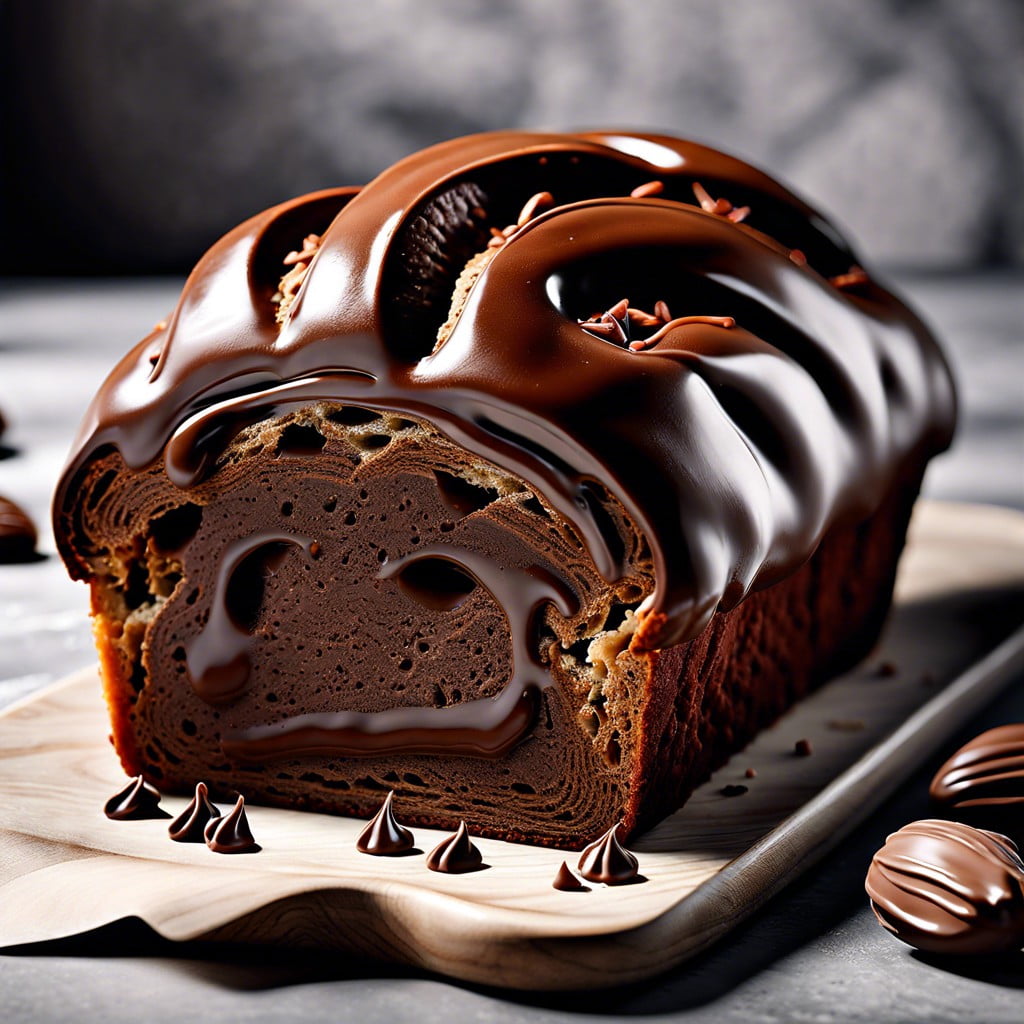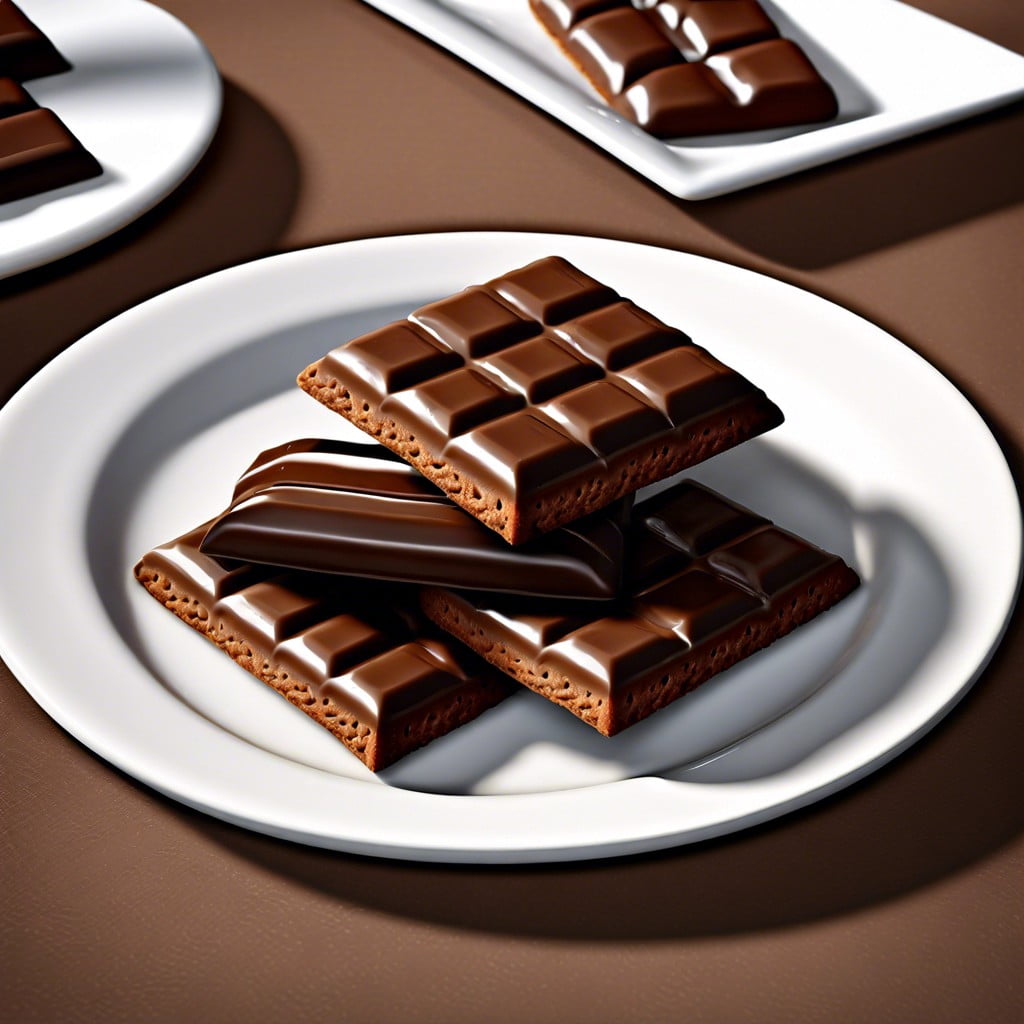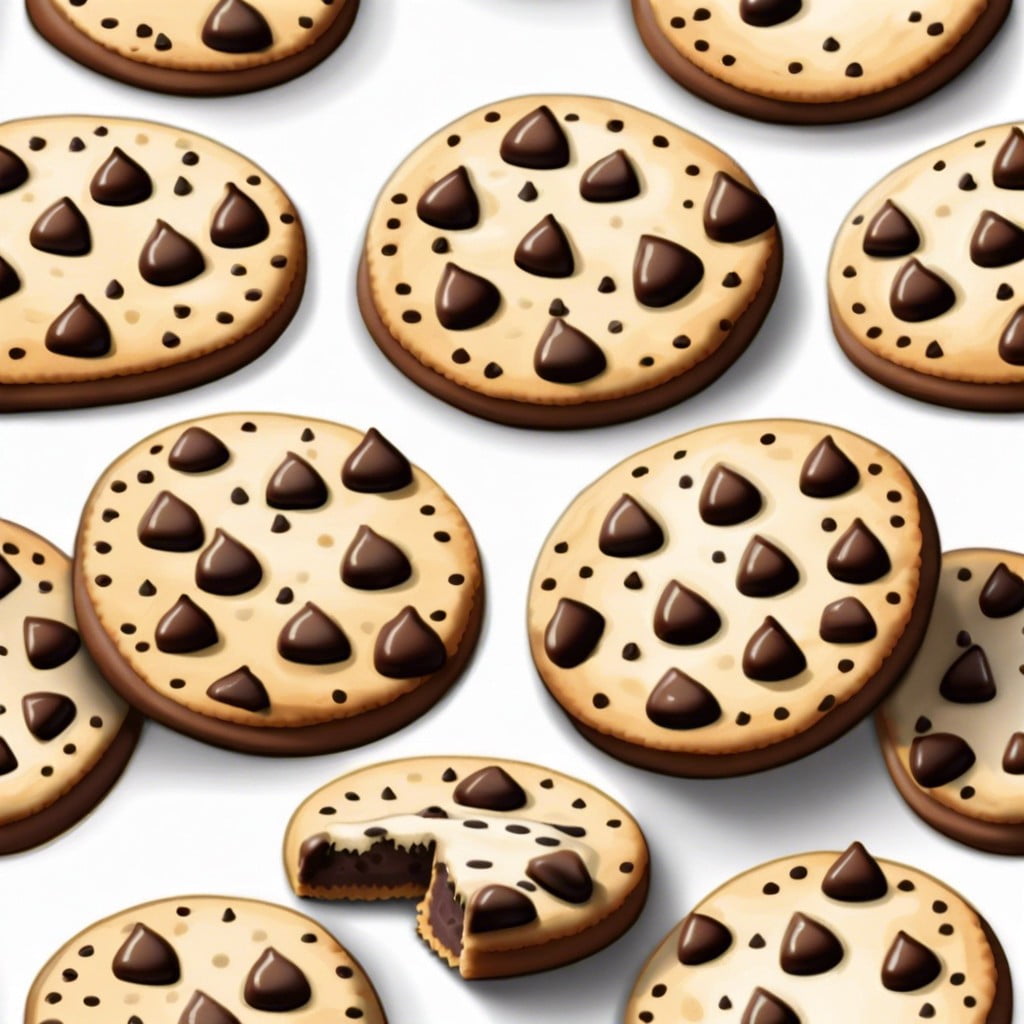Explore the rich and creamy world of Dominican hot chocolate, a delightful treat that will excite your taste buds with its unique blend of cocoa, spices and milk.
Dominican hot chocolate is a rich, creamy, and truly indulgent beverage that captures the essence of the Dominican Republic’s love for cocoa. This article will guide you through the steps of making this delectable drink from scratch.
You’ll learn about the unique ingredients, like the special Dominican cocoa and condensed milk, that give this hot chocolate its distinctive taste. From the correct proportions to the ideal brewing time, every detail is covered to ensure your homemade Dominican hot chocolate is as authentic and delicious as possible.
So, let’s dive into the world of Dominican cocoa and transform it into a cup of heavenly hot chocolate.
Key takeaways:
- Dominican hot chocolate is rich, creamy, and indulgent.
- Key ingredients include unsweetened cocoa, cinnamon, cloves, and condensed milk.
- Adjust ingredients to taste, such as using almond milk or natural sweeteners.
- Serve hot with whipped cream or pair with bread, cookies, or pastries.
- Store in the fridge and reheat gently before serving.
Inside
Ingredients Needed for Dominican Hot Chocolate

You’ll need to gather:
- Unsweetened cocoa powder is the base of your hot chocolate, providing a rich, chocolaty flavor.
- Cinnamon sticks and whole cloves are key spices in Dominican hot chocolate, infusing a warming depth of taste.
- Sweetened condensed milk will provide sweetness and a creamy texture.
- Vanilla extract adds complexity to the overall taste.
- Evaporated milk will give your hot chocolate a distinct, rich creaminess unlike regular milk.
- Water is used as the base for boiling the spices.
- A bit of salt to balance out the sweetness.
- Freshly grated nutmeg for a hint of warmth.
- Sugar for desired sweetness if necessary.
Remember, the quantity of each ingredient can vary based on your personal taste and the number of servings desired.
Instructions to Make Dominican Hot Chocolate
Gather your ingredients. This recipe requires unsweetened cocoa powder, cinnamon, cloves, nutmeg, star anise, evaporated milk, condensed milk, sugar, salt, and vanilla extract.
Begin the process by heating your spices, namely, the cinnamon, cloves, nutmeg, and star anise in a saucepan over medium heat. This will ensure the release of the aromatic oils in the spices.
Add your unsweetened cocoa powder to the spiced mixture. Stir continuously to prevent the mixture from clumping together.
Gradually stir in the evaporated milk. It’s important to continue stirring as it helps to fully integrate the cocoa powder.
Add your condensed milk, sugar, and a pinch of salt. Stir until all ingredients blend well.
Bring your mixture to a simmer. Make sure not to boil it as it could lead to over thickening or burning.
Turn off the heat and add your vanilla extract. Stir it in to distribute the flavor evenly.
Finally, strain the hot chocolate to eliminate the whole spices for a smoother sip. Your Dominican hot chocolate is now ready to serve. Enjoy the warming spices that make this chocolaty delight truly unique.
Variations/Substitutions for Dominican Hot Chocolate Recipe
For those with dietary restrictions or personal preferences, alternatives can be employed without losing the rich taste of the traditional Dominican hot chocolate.
If you’re vegan, swap regular milk for almond, oat, coconut, or soy milk. Be mindful, though, that these alternatives could alter the drink’s taste – coconut milk, for example, would add a slight tropical flavor.
Don’t like sugar? Opt for a natural sweetener such as honey, agave nectar, or stevia. For those avoiding caffeine, carob powder is an excellent substitute for cocoa.
You can also experiment with different flavors – a pinch of cinnamon or a splash of vanilla extract could elevate your hot chocolate. And for a bit of a kick? A dash of chili pepper. Remember, making Dominican hot chocolate is all about finding your perfect blend. Enjoy the process, savor the result.
In terms of procedure, the steps remain the same. The swap happens when you add your milk and sweetener to the pot. Simply use your chosen substitutes at this stage and proceed as usual.
Serving Suggestions for Dominican Hot Chocolate
Dominican hot chocolate is best served steaming hot, right out of the pot. To offer a delightful sensorial experience, serve it in a transparent mug allowing the rich color to create a feast for the eyes. Top it off with a dollop of whipped cream or sprinkle a dusting of cocoa powder for added aesthetics.
In terms of pairings, this chocolate drink intertwines perfectly with light bites. Consider pairing it with buttered toast or a flaky croissant for breakfast. If serving as a cozy evening treat, graham crackers, shortbread cookies, or even lightly salted pretzels make an excellent choice.
For special occasions or festivities, serving Dominican hot chocolate alongside a dessert spread allows for a unique beverage option. Mini pastries, fruit tarts, or churros are excellent companions to the flavoursome cup of warmth. Another idea is to serve it as an accompaniment to a cheese platter, where the robust cocoa contrasts beautifully with the creaminess of the cheese.
For a summer treat, let the hot chocolate cool, then pour it over a mug full of ice for a refreshing iced version. You could even freeze it into popsicles. Remember to adjust your sweetener when serving cold, as chilled beverages tend to require a slightly higher amount of sweetness.
Taking these suggestions into consideration when serving your Dominican hot chocolate can exponentially enhance the enjoyment of this delightful beverage.
Top Tips for Making Dominican Hot Chocolate
For the richest, creamiest Dominican hot chocolate, follow these expert tips:
- Use high quality cocoa: It doesn’t have to be the most expensive brand on the shelf, but quality cocoa will make a big difference to the taste of your hot chocolate. Avoid using cocoa that’s been sitting in your cupboard for a while – it may have lost its freshness and potency.
- Don’t rush the cooking process: Allow the milk and cocoa to simmer gently on a low heat rather than boiling it quickly. This helps the flavors to develop fully for a deeper, richer hot chocolate.
- Stir constantly to avoid burning: Milk can easily burn if left unstirred at the bottom of the pot. Keep the mixture moving to ensure even heating and prevent burnt tastes.
- Adjust the sugar to your taste: The sweetness of your hot chocolate is entirely up to you. Start with a little and add more if necessary.
- Experiment with spices: Traditional Dominican hot chocolate includes cinnamon, but you can also try adding a touch of nutmeg or vanilla extract for different flavor profiles.
- Don’t forget to froth: Whisk the hot chocolate vigorously before serving to froth it up, giving it that traditional Dominican touch.
Remember, making the perfect Dominican hot chocolate is all about taking your time and adjusting the ingredients to suit your tastes. Don’t be afraid to experiment and make it your own!
Video Tutorial On How to Make Dominican Hot Chocolate
In this video tutorial, the first step is showcasing all required ingredients, including unsweetened cocoa, milk, sugar, cinnamon sticks, cloves, and nutmeg. The tutorial demonstrates these ingredients being combined in a pot, ensuring viewers understand the order and process.
Emphasis is placed on the necessity of constantly stirring during the simmering process. This is crucial so that the milk does not burn and the spices infuse effectively, resulting in a rich, creamy texture and authentic flavor.
Next, the video illustrates when and how to add the vanilla extract, a crucial step to enhance the hot chocolate’s flavor profile.
The final part of the video exhibits the appropriate way to strain the mixture using a fine mesh strainer. This removes the whole spices and ensures a smooth consistency.
The video concludes by demonstrating the perfect pouring technique to serve Dominican hot chocolate in cups, showcasing its creamy texture and dark chocolate color. Throughout the video, visual cues supplement the verbal instructions for better understanding.
Remember, the key to a perfect Dominican hot chocolate lies in the correct ratio of ingredients, constant stirring, and correct infusion of spices. Take your time, enjoy the process, and relish the results. The video aids in mastering this comforting drink with its detailed breakdown.
The final note encourages viewers to experiment with proportions and ingredients to match their personal tastes, reinforcing the versatile nature of Dominican hot chocolate. Intricate details like frothing the hot chocolate before serving for an extra creamy texture or adding a dash of cream on top are also suggested to elevate the beverage.
Interestingly, there is also mention of grating some dark chocolate on top for a gourmet twist, a small addition that can vastly enhance the visual and gastronomical experience.
Nutrition of Dominican Hot Chocolate
Dominican hot chocolate, though indulgent, provides numerous nutritional benefits. It’s constructed with cocoa powder, which is packed with antioxidants that can reduce inflammation and boost heart health. Cocoa is also known for being rich in polyphenols, compounds with antioxidant properties that promote various health benefits, including improved cholesterol levels, better blood sugar control, and reduced risk of heart attacks or stroke.
The primary sweetener, panela – or unrefined whole cane sugar – retains minerals like iron, calcium, and magnesium as it undergoes less processing than white sugar. While panela is still a sugar and should be consumed in moderation, its mineral content provides a small nutritional advantage.
Adding milk, whether dairy or plant-based, contributes protein and essential vitamins and minerals, including calcium and Vitamin D. Skim or low-fat milk can be used to reduce the calorie content if desired.
While tasty and filled with beneficial nutrients, remember: Dominican hot chocolate should be consumed in moderation due to its overall calorie and sugar content.
Here are three key points to remember:
- High-quality cocoa powder enhances the antioxidant content.
- Substitute white sugar with panela for extra minerals.
- Utilize low-fat or plant-based milk to decrease the calorie content while maintaining protein and vitamins.
The Uniqueness of Dominican Hot Chocolate
Dominican hot chocolate holds its special place in the world of cocoa-based drinks due to certain distinctive features:
Firstly, it’s typically creamier than other hot chocolates. This can be attributed to the fact that most recipes call for the use of condensed milk or cream, giving it a rich, velvety texture that distinguishes it from its counterparts.
Secondly, the flavor profile is quite unique. Dominican hot chocolate is known for its bold and robust taste, derived from the locally grown cacao that is naturally rich and aromatic. Often, native spices like cinnamon and nutmeg are added to enhance its flavor.
Lastly, the preparation method sets it apart. Unlike other hot chocolate preparations where the cocoa is just mixed into hot milk or water, Dominican hot chocolate involves melting actual chocolate bars or balls, made from pure Dominican cacao, into the milk. This traditional method lends an authentic taste and potency to the beverage.
While the actual recipe might vary slightly from family to family or region to region, these three aspects largely define and differentiate Dominican hot chocolate in the realm of cocoa drinks.
The History and Tradition Attached to Dominican Hot Chocolate
Dominican hot chocolate, locally known as ‘chocolate de mesa,’ carries a rich cultural significance. For centuries, the Dominican Republic’s fertile soil and tropical climate have provided ideal conditions for growing cacao trees whose beans are used to make this delectable beverage.
Dominican hot chocolate is traditionally prepared freshly from roasted, ground cocoa beans. Unlike common cocoa powder, the Dominican version retains the natural cocoa butter, giving it a richer and smoother texture. This hot chocolate variant is typically chunky and rustic, offering a unique and authentic experience. Its old-fashioned preparation method involves constantly stirring the hot mixture, done with a ‘molinillo,’ a traditional wooden tool used to froth the drink.
During the holiday season, particularly on Christmas Eve and New Year’s Eve, Dominican households always have a pot of steaming hot chocolate on their stoves. The drink is deeply embedded in their love for family gatherings and shared meals. Despite its simplicity, many consider it a link to their ancestral roots and heritage.
One unique aspect of Dominican hot chocolate is its versatility. It can be sweetened to taste and flavored with a splash of vanilla, a sprinkle of cinnamon or a dash of nutmeg. Some people even enjoy it with a spoonful of peanut butter or a hint of chili. It’s also served with a variety of accompaniments, from bread and butter to a slice of Dominican cake.
If you weren’t previously aware of Dominican hot chocolate or its significance, knowing about its place in Dominican culture makes it all the more special. As you savor the rich, luxurious texture and deep, robust flavor, remember: every sip tells a story.
How to Store and Reheat Dominican Hot Chocolate
Store your Dominican hot chocolate in a fridge-safe, airtight container. You can keep it in the refrigerator for up to a week.
To reheat, pour the desired amount into a saucepan and, on a low to medium setting, gently heat the mixture, stirring frequently to prevent clumping or burning. If the chocolate is too thick after refrigerating, add a splash of milk during the reheating process to reach your preferred consistency.
For those in a hurry, the microwave is also a feasible option. Pour the Dominican hot chocolate mixture into a microwave-safe mug, heating in short 30-second intervals. Stir in between each interval until warmed to your liking.
In both cases, ensure the hot chocolate is heated thoroughly before serving to enjoy its best flavor.
Pairing Dominican Hot Chocolate With Food and Desserts
Featuring robust flavors, Dominican hot chocolate can be a delightful accompaniment to a variety of foods and desserts, thereby enhancing the overall dining experience.
Dominican hot chocolate pairs perfectly with hearty breakfast items. Breads like sweet cornbread, toast, or even croissants soak up the thick hot chocolate making a delicious complement.
For a lighter pairing, fresh fruits like strawberries, raspberries, or sliced bananas can be an enjoyable combination. The fresh, tangy flavors offset the rich chocolate and create a well-balanced palate.
Traditional Dominican desserts like bizcocho dominicano (Dominican cake) or tres leches (three milk cake) also match the bold flavor profile of Dominican hot chocolate. Their sweet, creamy textures can be the perfect follow-up to a rich, warm sip.
If looking for something salty or savory, a plate of cheese and crackers pairs surprisingly well. Cheese like Brie or camembert that are rich and smooth can add a pleasant contrast to the sweetness.
Lastly, a nutty, crunchy granola bar can be a great snack alongside Dominican hot chocolate. The sweet and salty granola, combined with the rich hot chocolate, can create a pleasing taste and texture contrast.
Remember, while these are solid suggestions, food pairing is subjective and depends largely on personal preferences. So, feel free to try out different combinations and find what works best for the individual palate.
FAQ
Do they make chocolate in Dominican Republic?
Yes, the Dominican Republic is one of the world’s biggest producers of chocolate, exporting more than 260 million US dollars a year.
How is Mexican hot chocolate different than regular hot chocolate?
Mexican hot chocolate differentiates from regular hot chocolate by incorporating spices such as cinnamon and chili, along with chopped bittersweet chocolate, resulting in a robust yet less sugary flavor profile.
Why is Mexican hot chocolate so good?
Mexican hot chocolate is so good because the balance between the bitterness of ground and roasted cacao nibs and the sweetness of granulated sugar, combined with spicy cinnamon, creates an intensely flavorful profile.
What is Aztec hot chocolate made of?
Aztec hot chocolate is made of 100% cacao water, a couple of spoonfuls of raw cane sugar, and a hint of chili.
What makes Dominican hot chocolate unique in its preparation and taste?
Dominican hot chocolate is unique in its preparation and taste owing to the use of freshly ground cocoa beans, local spices, and sweetened condensed milk which contribute to its rich, creamy texture, and a blend of sweet, bitter, and spicy flavors.
How does the use of spices in Mexican hot chocolate impact its flavor?
The use of spices in Mexican hot chocolate, especially cinnamon and sometimes chili, adds a unique warmth and slightly spicy twist, enhancing the depth of the cocoa flavor.
What are the main ingredients in a traditional Aztec hot chocolate, and how do they contribute to its distinctive profile?
Traditional Aztec hot chocolate primarily includes cacao, chili peppers, and cornmeal, with the cacao providing a rich, intense chocolate taste, the peppers giving it a spicy kick, and the cornmeal offering a unique, thick texture.




